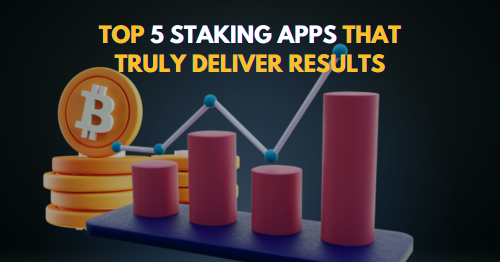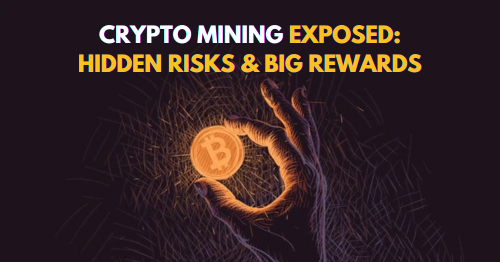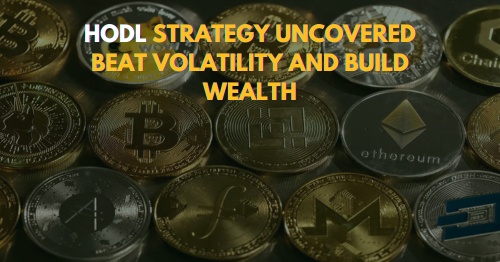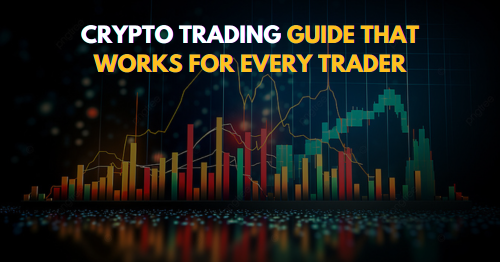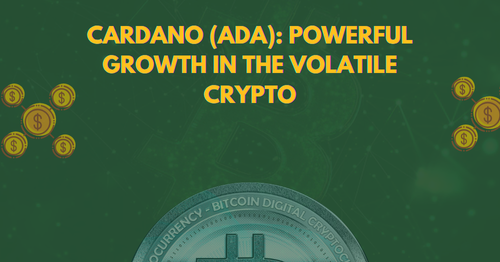
Cardano (ADA) Powerful Growth in the Volatile Crypto
Cardano (ADA): Powerful Growth in the Volatile Crypto. Cardano (ADA) has emerged as a resilient force in the ever-fluctuating crypto market, driven by its strong focus on sustainability, peer-reviewed research, and real-world utility. Its innovative proof-of-stake model offers a scalable and energy-efficient alternative to traditional blockchains, making it a standout choice for long-term investors seeking growth amid volatility.
What is Cardano (ADA)?
Cardano (ADA) is a decentralized, open-source blockchain platform focused on building a more secure and scalable infrastructure for smart contracts and decentralized applications (dApps). Designed with a research-driven philosophy, Cardano stands apart from competitors by blending academic rigor with high-performance blockchain engineering. Named after Gerolamo Cardano, a 16th-century Italian polymath, the network’s native token, ADA, pays homage to Ada Lovelace, regarded as the first computer programmer.
In the fast-moving world of cryptocurrencies, Cardano (ADA) is known for its sustainable and future-proof architecture, making it an appealing choice for both investors and developers.
Read All About: Ripple (XRP), Solana (SOL), Bitcoin (BTC)
Owner and Establishment Year
Cardano was established by Charles Hoskinson, a visionary blockchain developer who also played a key role(Co-Founder) in the creation of Ethereum. The project was officially launched in September 2017 by the blockchain research and engineering firm IOHK (Input Output Hong Kong), which Hoskinson leads. Other key organizations involved in Cardano’s ecosystem include:
- The Cardano Foundation, headquartered in Switzerland, plays a pivotal role in overseeing the global growth and adoption of the Cardano blockchain. As an independent non-profit organization, it is dedicated to driving ecosystem development, shaping regulatory frameworks, fostering community engagement, and ensuring transparent governance to support Cardano’s long-term vision and sustainability.
- EMURGO, which promotes commercial adoption of the Cardano blockchain.
Together, these entities form a triad that sustains the network’s technological, strategic, and financial operations.
History and Development
The development of Cardano (ADA) follows a structured, five-phase roadmap:
- Byron (2017) – Byron marked the initial launch of the Cardano blockchain, establishing the foundation of the network and introducing its native cryptocurrency, ADA.
- Shelley (2020) – Shelley represented a major milestone by enabling staking features and transitioning the network toward full decentralization, allowing ADA holders to actively participate in securing the blockchain.
- Goguen (2021) – Enabled smart contract functionality.
- Basho – Focuses on scaling and performance enhancements.
- Voltaire – Aims to implement governance through voting and treasury systems.
Each phase is backed by peer-reviewed research, a unique trait that differentiates Cardano (ADA) from many other cryptocurrencies. This methodological approach ensures robust development, security, and long-term sustainability.
Key Features and Underlying Technology
Cardano (ADA) integrates several cutting-edge technologies and design principles:
- Proof-of-Stake (PoS) via the Ouroboros protocol: A more energy-efficient alternative to Bitcoin’s Proof-of-Work.
- Modular Architecture: Separates the settlement and computation layers for flexibility and scalability.
- Smart Contracts: Enabled by the Plutus platform, written in Haskell for improved security.
- Interoperability and Scalability: Designed to communicate across multiple blockchains and support millions of users without compromising speed.
These features make Cardano (ADA) highly attractive for enterprise use, DeFi applications, and national-scale blockchain solutions.
Use Cases and Adoption
The use cases for Cardano (ADA) continue to grow:
- Decentralized Finance (DeFi) platforms and lending services
- Supply chain tracking, especially in agriculture and pharmaceuticals
- Digital identity verification for unbanked populations
- Smart Contracts and NFTs
- Educational records verification in developing countries
Cardano has gained significant traction in Africa, with partnerships such as Ethiopia’s Ministry of Education, where it helps digitize the academic records of 5 million students.
Its versatile design and global adoption efforts illustrate how Cardano (ADA) is more than just a speculative as, it’s a foundation for practical blockchain solutions.
Price Trends and Market Insights
As of mid-2025, Cardano (ADA) ranks within the top 10 cryptocurrencies by market cap. Its price has seen notable fluctuations:
- All-Time High: ~$3.10 in September 2021
- Recent Range (2024–2025): $0.25 – $0.80
- Market Cap (approx): Over $30 billion
Investor confidence is buoyed by consistent development updates and strategic global partnerships. Analysts suggest that Cardano (ADA) often performs well in bull markets due to its reputation as a fundamentally strong project.
How to Buy and Store Cardano (ADA)
Buying Cardano (ADA) is simple and can be done through most leading exchanges:
- Centralized Exchanges (CEXs): Binance, Coinbase, Kraken, Bitfinex
- Decentralized Exchanges (DEXs): SundaeSwap (native to Cardano)
To store Cardano (ADA) safely:
- Hot Wallets: Yoroi, Daedalus (official Cardano wallets)
- Hardware Wallets: Ledger Nano S/X, Trezor Model T
Always use two-factor authentication and store large amounts of ADA in cold wallets for optimal security.
Real-World Projects and Partnerships
Beyond theoretical potential, Cardano (ADA) has been making tangible impacts through global partnerships and pilot programs. In Ethiopia, the blockchain is being used to track academic performance for millions of students, making the education system more transparent and accountable. Similarly, World Mobile, a telecommunications company, is working with Cardano to deliver affordable internet access in remote areas of Africa using blockchain infrastructure.
These initiatives exemplify how Cardano (ADA) isn’t just confined to crypto speculation; it is driving measurable, positive change. The platform’s dedication to improving socio-economic conditions in underdeveloped regions has made it particularly appealing to mission-driven investors and governments.
Community and Developer Ecosystem
The Cardano (ADA) community is one of the most engaged and educated in the blockchain space. From dedicated forums and GitHub repositories to developer events like the Cardano Summit, the ecosystem thrives on innovation and transparency. The Cardano Improvement Proposals (CIPs) process allows community members to contribute to platform upgrades, ensuring inclusive and decentralized development.
Furthermore, the Plutus and Marlowe programming environments provide smart contract developers with powerful tools to build secure dApps. With more than 1,000 projects under development and continuous updates from IOHK, the future looks promising.
Whether you’re looking to invest, build, or simply learn, Cardano (ADA) offers an expansive and evolving ecosystem worth diving into.
Future Outlook and Predictions
Looking ahead, Cardano (ADA) has strong growth potential. Some predictions from crypto analysts and institutions include:
- Greater adoption in real-world sectors like healthcare, agriculture, and governance
- A robust developer ecosystem as smart contract capabilities expand
- Ongoing partnerships in Africa, Latin America, and Southeast Asia
- Potential price projections ranging from $1.50 to $5.00 by 2026, depending on market sentiment and roadmap execution
Its energy-efficient infrastructure also positions it as a green alternative in an era of increasing environmental concerns, which may play a vital role in future institutional adoption.
Final Thoughts
In a world where blockchain projects often prioritize hype over substance, Cardano (ADA) stands as a rare exception. With its scientific approach, a dedicated leadership team, and real-world use cases, Cardano (ADA) is well-positioned for long-term success. Whether you’re a retail investor, blockchain developer, or crypto researcher, ADA offers a stable, scalable, and innovative foundation worth exploring.
Frequently Asked Questions
1. What makes Cardano (ADA) different from other cryptocurrencies?
Cardano (ADA) stands out for its peer-reviewed development model, scientific philosophy, and energy-efficient Proof-of-Stake consensus mechanism called Ouroboros. Unlike many crypto projects, Cardano is built in structured phases, focusing on long-term scalability, interoperability, and formal verification for smart contracts.
2. Is Cardano (ADA) a good investment in 2025?
Cardano (ADA) is considered a solid long-term investment by many analysts due to its strong development roadmap, increasing real-world adoption, and a growing ecosystem of dApps and DeFi platforms. However, as with all crypto assets, investing in ADA carries risk and should be done after thorough research.
3. How can I buy and securely store Cardano (ADA)?
You can buy Cardano (ADA) on popular exchanges like Binance, Coinbase, or Kraken. For secure storage, use official wallets such as Daedalus or Yoroi, or opt for hardware wallets like Ledger Nano S/X or Trezor to keep your ADA safe from hacks and phishing attacks.
I work as a content writer in the blockchain and cryptocurrency domain. I have a keen interest in exploring the world of digital assets, Web3, and emerging crypto technologies. My goal is to provide readers with easy-to-understand, engaging, and trustworthy insights, helping them stay informed and confident in the rapidly evolving world of crypto and blockchain.


